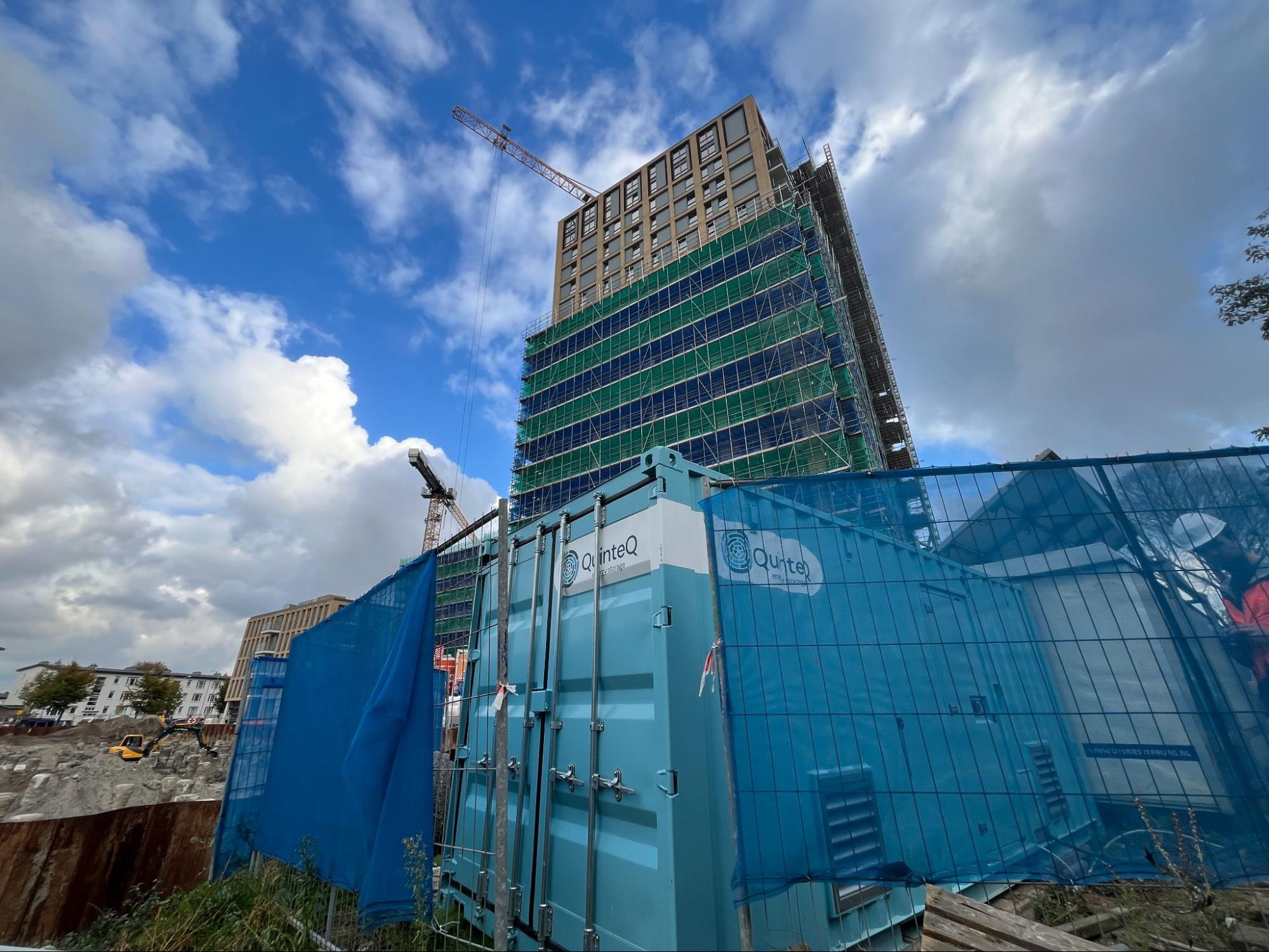
Flywheel Energy Storage for Construction Site Peak Shaving
.png)
- LocationThe Hague
- DateNovember 2024
Temporary construction sites often face big challenges when it comes to managing peak electricity demand. Heavy equipment like tower cranes and construction lifts can draw large amounts of power in short bursts, putting huge pressure on the site’s grid connection or requiring oversized diesel generators. These peaks drive up costs, add operational risk, and make it harder to hit sustainability targets.
At eQiP Energy, we believe flexible Flywheel Energy Storage can solve this. In November 2024, we partnered with De Vries en Verburg on a live project in The Hague to test our flywheel system in exactly this kind of high-demand setting. The goal was to demonstrate that our flywheel can reliably handle multiple simultaneous high-power operations — like two tower cranes and a lift running together — without running empty or relying on extra fuel or emissions-heavy backup.
Our flywheel works by storing energy when demand is low and delivering it instantly when demand spikes — a process known as peak shaving. Peak shaving happens in very short periods, from seconds to minutes, providing a high-power burst exactly when needed to keep the grid connection stable.
During this project, we monitored three power groups over typical workdays and found that individual cranes rarely exceeded 150 kW, while the combined activity of both cranes and the construction lift often pushed the total site load above 200 kW. Throughout the day, we also observed significant peak overlaps, confirming that simultaneous equipment operation is a real challenge for managing site power demand.
What were the Key Findings?
- The flywheel handled all peak loads without running empty, even with limited recharge time
- The energy needed per peak was low enough to allow rapid recovery
- Real-time peak shaving of multiple high-power users was achieved
- Peak demand was reduced from 250 A down to just 50 A — an 80% reduction
If the site had instead relied on diesel generators to manage these peaks, it would likely have required a 200 A generator to maintain stability. Such a setup could have cost approximately €8,100 per week in fuel and operations or €243,000 over a typical 30-week project.
For construction sites that face short, intense power peaks, a small but fast flywheel is much more effective for peak shaving than a large but slow battery. In this project, the 4 kWh storage capacity proved more than sufficient, showing that high-speed power delivery is more valuable than simply having a large storage volume. This setup is straightforward for operators and ensures the flywheel supports the equipment that needs it most, exactly when it matters.


